Tag Archive for: Virunga
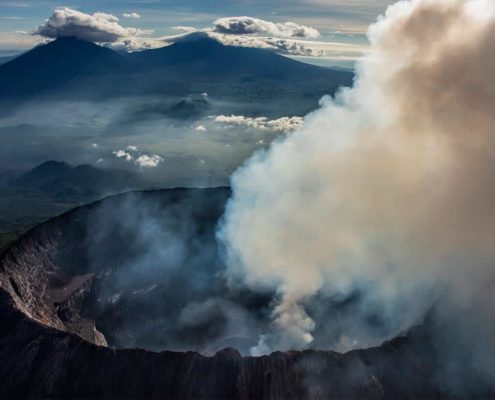
BIOMONITORING SURVEY AT VIRUNGA VOLCANIC PROVINCE
ALL, RESILIENCE, UNDRRVolcanic emissions represent one of the most important natural sources of major and trace elements (gases and particulates) to the atmosphere (e.g. S, F, As, Cd, Cu, Hg, Pb, Sb, Tl and Zn), sequentially influencing the other geochemical spheres (hydrosphere, lithosphere and biosphere) through atmospheric deposition.
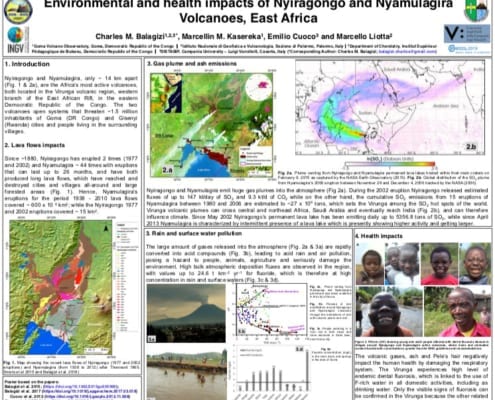
ENVIRONMENTAL & HEALTH IMPACTS OF NYIRAGONGO & NYAMULAGRIA
ALL, RESILIENCE, UNDRRNyiragongo and Nyamulagira, only ~ 14 km apart (Fig. 1 & 2a), are the Africa’s most active volcanoes, both located in the Virunga volcanic region, western branch of the East African Rift, in the eastern Democratic Republic of the Congo. The two volcanoes open systems that threaten ~1.5 million inhabitants of Goma (DR Congo) and Gisenyi (Rwanda) cities and people living in the surrounding villages.
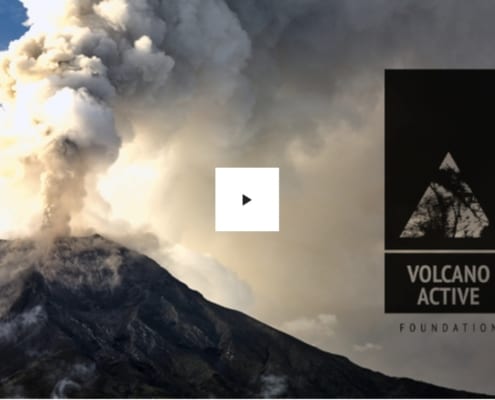
SERIES OF DOCUMENTARIES TO EDUCATE THE WORLD
ALL, PRESS, PROJECTS, RESILIENCEThe objective of this series of documentaries is to educate the world and its rulers and influences with decision-making power about the imminent dangers of volcanoes for the planet.
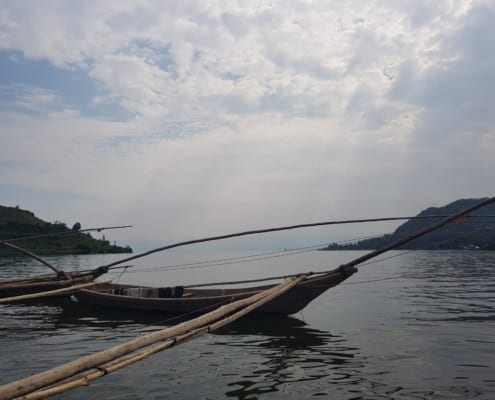
DEADLY LAKES
ALLExiste un fenómeno volcánico del que se habla poco por su falta de investigación y por su ubicación remota:La desgasificación repentina de dióxido de carbono de un lago volcánico.En la actualidad existen tres lagos, todos ellos en Africa, de los que no se habla nunca relacionándolos con este tipo de erupciones: Lago NYOS (Camerún), MONOUN (Camerún) y KIVU (DRC-Ruanda).
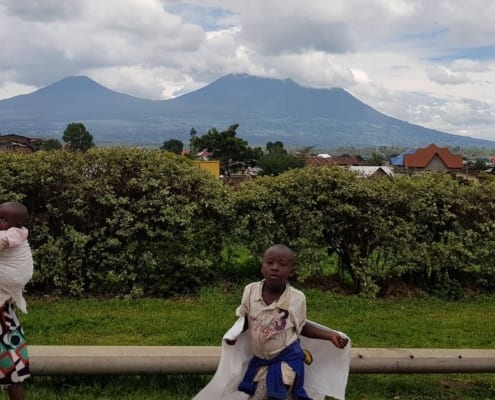
NATURAL HAZARDS IN GOMA AND THE SURROUNDING VILLAGES
ALLThe city of Goma and its surrounding villages (Democratic Republic of the Congo, DRC) are among the world’s most densely populated regions strongly affected by volcanic hazards. In 2002, Nyiragongo volcano erupted destroying 10–15% of Goma and forced a mass evacuation of the population. Hence, the * 1.5 million inhabitants of Goma and Gisenyi (Rwanda) continue to live with the threat of new lava flows and other eruptive hazards from this volcano. The current network of fractures extends from Nyiragongo summit to Goma and continues beneath Lake Kivu, which gives rise to the fear that an eruption could even produce an active vent within the center of Goma or within the lake. A sub-lacustrine volcanic eruption with vents in the floor of the main basin and/or Kabuno Bay of Lake Kivu could potentially release about 300 km3 of carbon dioxide (CO2) and 60 km3 of methane (CH4) dissolved in its deep waters that would be catastrophic to populations (* 2.5 million people) along the lake shores. For the time being, ongoing hazards related to Nyiragongo and Nyamulagira volcanoes silently kill people and animals, slowly destroy the environment, and seriously harm the health of the population. They include mazuku (CO2-rich locations where people often die of asphyxiation), the highly fluoridated surface and ground waters, and other locally neglected hazards.
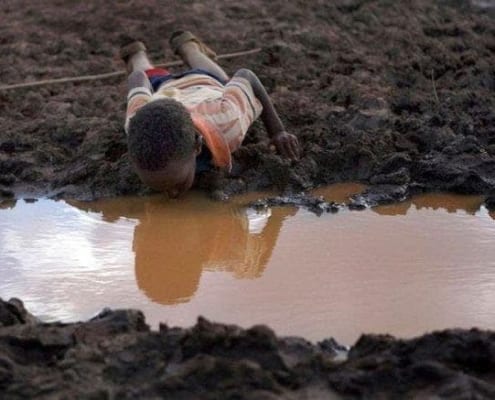
INFLUENCE OF MOISTURE SOURCE DYNAMICS AND WEATHER PATTERNS IN CENTRAL-EASTERN AFRICA
ALLWereport the first δ18Oandδ2H data of Virunga rainfall in the Eastern Democratic Republic of the Congo, situated on the limit between Central and Eastern Africa. The dataset is from 13 rain gauges deployed at Mount Nyiragongo and its surroundings sampled monthly between December 2013 and October 2015. The δ18O and δ2H vary from −6.44 to 6.16‰, and −32.53 to 58.89‰ respectively, and allowed us to define a LMWL of δ2H= 7.60δ18O+16.18. Three main wind directions, i.e. NE, E and SE, were identified in the upper atmosphere corresponding to threemajormoisture source regions. On the contrary, lower atmosphericwinds areweaker in nature and originate mainly from the S and SW, creating a topographically-driven, more local moisture regime. The latter is due to the accumulation in the floor of the rift of water vapor from Lake Kivu forming a layer of isotopically enriched vapor thatmediates the isotope enrichment of the falling raindrops. A strong seasonality is observed in both δ18O and δ2H data, and is primarily driven by combined seasonal and spatial variation in the moisture sources. The δ18O and δ2H seasonality is thus correlated to weather patterns, as the latter control the wet to dry season shifting, and vice versa. The key characteristic of seasonality is the variation of monthly precipitation amounts, since the mean monthly air temperature is nearly constant on an annual scale.



